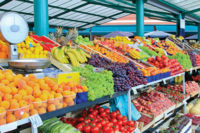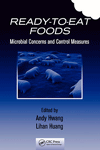Antioxidant-rich Diet May Cut Stroke Risk

The prospective study found that women with no history of CVD who consumed the highest amount of antioxidants in foods such as fruit, vegetables, tea, whole grains and chocolate had a 17% lower risk for strokes than those who ate the least amount. Among women with a history of CVD, those who consumed the most antioxidants had a 45% lower risk for hemorrhagic strokes.
"This study suggests that eating a diet rich in antioxidants, especially from fruits and vegetables, may be of importance for stroke prevention," lead author Susanne Rautiainen, MSc, a PhD student at Karolinska Institutet, Sweden, told Medscape Medical News.
The study was published online December 1 in Stroke: Journal of the American Heart Association. Researchers used the Swedish Mammography Cohort, a database that includes women born from 1914 to 1948 in the counties of Uppsala and Västmanland, Sweden. The cohort contained 36,715 women who were followed up from September 15, 1997, to December 31, 2009. A 1997 questionnaire on diet, education, weight, height and potential risk factors for stroke served as a baseline for the analysis.
Investigators calculated the total antioxidant capacity (TAC) in the diet, using a database of the most common foods. "The TAC does not identify specific antioxidants, but rather, it measures the entire antioxidant network, including all present antioxidants, and takes into account the synergistic effects between compounds," explained Rautiainen.
The researchers analyzed the 31,035 women who were free of CVD at baseline separately from the 5680 women with a history of CVD. Members of the CVD-free cohort were categorized into quintiles, and those with a CVD history into quartiles, of dietary TAC.
From the Swedish Hospital Discharge Registry, researchers identified 1,322 strokes among CVD-free women and 1,007 strokes among those with a history of CVD. Risk was adjusted for age, education, smoking body mass index, physical activity, hypertension, hypercholesterolemia, diabetes, family history of myocardial infarction, aspirin use, dietary supplement use, and intakes of total energy, alcohol, and coffee.
The researchers report that among the CVD-free women, those in the highest quintile of dietary TAC had a statistically significant 17% lower risk for total stroke compared with women in the lowest quintile (hazard ratio, 0.83; 95% confidence interval, 0.70 - 0.99; P = .04).
Dietary TAC was inversely associated with both cerebral infarction and hemorrhagic stroke, although these results were not statistically significant.
Fruits and vegetables contributed about 50% of TAC. Other contributors included whole grains (18%), tea (16%), and chocolate (5%).
In the CVD subgroup, women in the highest quartile of dietary TAC had a significant 45% lower risk for hemorrhagic stroke compared with those in the lowest quartile (adjusted hazard ratio, 0.55; 95% confidence interval, 0.32 - 0.95; P = .03). However, there was no association with total stroke.
In this subgroup, women in the lowest TAC quartile might have been more likely to have a history of stroke, and therefore be more likely to get a hemorrhagic stroke, although the inverse association remained after adjusting for history of stroke, said Rautiainen.
"Women with a CVD history may control their blood pressure or change their lifestyles because of knowledge of their disease," she speculated. "This might have produced a spurious inverse association between TAC of diet and risk of hemorrhagic stroke."
The findings of this study seem to conflict with those of previous research that failed to show beneficial effects of antioxidant supplements on stroke risk. "The contradiction may be explained by the fact [that] these studies looked at high doses of single antioxidants, whereas we aimed to examine antioxidant intake by taking into account all antioxidants present in the diet, including thousands of compounds, in doses obtained from a usual diet," said Rautiainen.
Oxidative stress may be at the root of some strokes, as the body may be unable to neutralize cell-damaging free radicals, which can lead to inflammation and vascular damage, said Rautiainen.
How might antioxidant-rich foods reduce this stroke risk? According to Rautiainen, vitamins C and E, carotenoids, flavonoids, and other such compounds scavenge free radicals, thereby inhibiting oxidative stress. "Antioxidants, especially flavonoids, may also help improve endothelial function and reduce blood clotting, blood pressure, and inflammation," she said.
The next step for the research team is to see whether TAC intake is associated with CVDs other than stroke, she concluded.
Approached for comment, Louise D. McCullough, MD, PhD, from the Department of Neurology and the Department of Neuroscience, University of Connecticut Health Center, and the Stroke Center at Hartford Hospital, said the study's overall strengths were its size and the fact that the cohort was followed up for such a long time.
"This is by far the biggest and most complete trial that's been done," she said.
The results confirm what has been long suspected: "People have known from retrospective trials and correlative studies that antioxidants in fruits and vegetables, etc, reduce stroke risk," said McCullough. "This confirms it in a prospective trial."
She pointed out that eating a healthy, antioxidant-rich diet is associated other healthy behaviors. "People who tend to eat healthier tend to also have healthier lifestyles as a whole, but even controlling for that, in this large population it does seem that the diet had an independent beneficial effect on stroke incidence."
McCullough noted that the reduced risk among health women "wasn't a huge change in risk" in terms of absolute numbers, but she emphasized that reducing stroke risk by incorporating more antioxidant-rich foods in the diet is relatively easy to do.
The study was supported by the Swedish Research Council for Infrastructure and the Swedish Council for Working Life and Social Research. The authors have disclosed no relevant financial relationships.
From the December 3, 2011, Prepared Foods' Daily News.
Looking for a reprint of this article?
From high-res PDFs to custom plaques, order your copy today!





